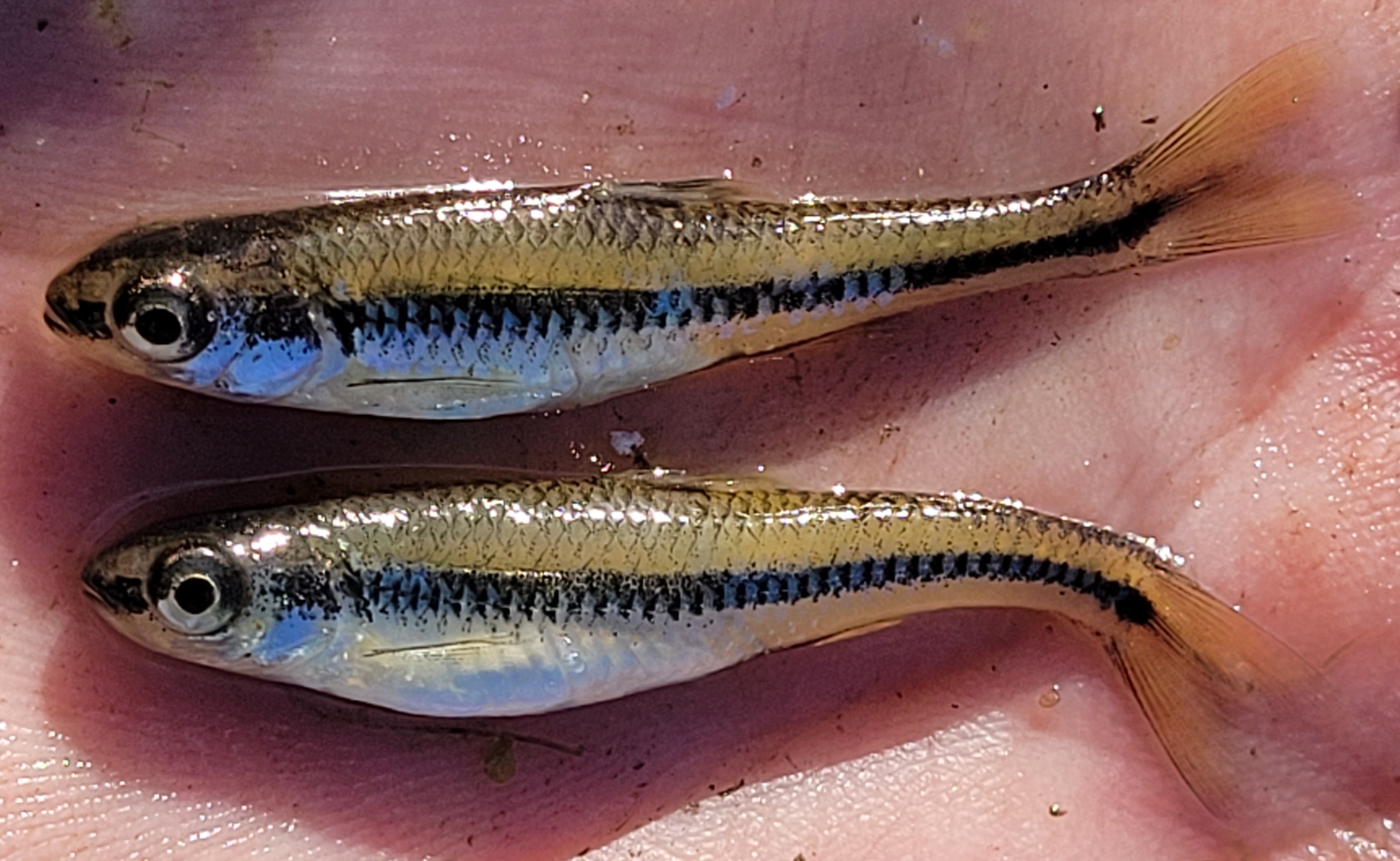Fish Iowa - Fish Species - Weed shiner

Characteristics
Has a terete body that is slightly compressed. The body is olive-green to straw on the back with silvery sides and white beneath. A dark lateral band is sharply outlined above with a light streak, but dim below. It starts on the chin and snout, continues along the body to the caudal fin, where a distinct dark spot can be seen within the rays. A terminal mouth is slightly oblique and no barbel is present. Pigmentation on the inside of the mouth is absent, except for a few melanophores on the oral valve. Hooked pharyngeal teeth are arranged in a formula of 2, 4-4, 2, but there may be variations. The breast is naked below the pectoral fins. The slightly de-curved lateral line has 34 to 37 scales, and may be interrupted with fewer than 10 unpored scales. Dorsal and pelvic fins have 8 rays, while the pectoral fin has 12 to 14 rays, and the anal fin has 7 rays.
Foods
Microscopic plants, small insects and their larvae
Expert Tip
These fish are an important indicator of environmental health and currently are rarely found in Iowa waters due to loss of habitat.
Details
The continental range of this cyprinid extends along the Gulf Coast from Texas to Florida and up the Mississippi River to the Great Lakes.
Weed Shiners are found only in rivers with a sand bottom and sluggish or no current. Surprisingly, it is not always found in weedy areas. Adults reach up to 2 1/2-inches long and are usually found in schools.
Recent stream sampling information is available from Iowa DNR's biological monitoring and assessment program.
Distribution Map

Listed as "threatened" in Iowa; found mostly in eastern Iowa in the Cedar and Mississippi rivers, were it is rare.
See our most recent distribution data for this species on the Iowa DNR's Bionet application.
Fishing is not allowed for this species.
If you catch this species, immediately return it to the water with as little injury as possible.